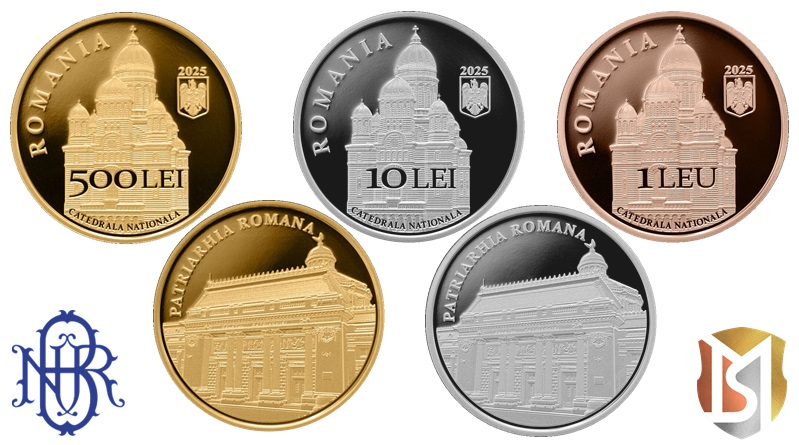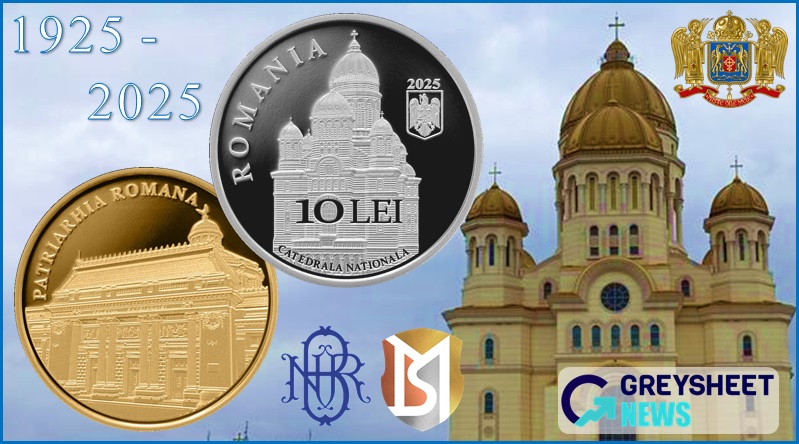The centenary of the Romanian Patriarchate is being celebrated in 2025, marking 100 years since its elevation to Patriarchal status on the 25th February 1925. The ultimate culmination of ecumenical independence was the result of several occurrences and milestones during Romania’s path to eventual status as first an established kingdom, and later a republic.
The Orthodox hierarchy in the established Romanian principalities of Wallachia and Moldavia was under the direct ecclesiastical authority of the Ecumenical Patriarchate of Constantinople. It was Prince Alexandru Ioan Cuza’s declaration of independence of the states comprising present-day Romania in 1865 from Ottoman control, that he enacted legislation declaring the church’s complete independence from Constantinople, beginning the process toward autocephaly. With Romania’s independence in 1877 as recognised principality, the elevation to autocephaly was a natural step, and which came about in 1885, four years after its elevation to a Kingdom. The Great Union of 1918, which brought various Romanian territories under one state would bring the Romanian Orthodox Church would necessitate further status for the Church.
On the 4th February 1925, the Holy Synod of the Romanian Orthodox Church voted unanimously to establish the Patriarchate. Official recognition of this decision was granted by King Ferdinand I when he promulgated the law formally recognising the decision on the 25th February 1925. The Ecumenical Patriarchate of Constantinople formally recognised the establishment of the Romanian Patriarchate on the 30th July 1925 and, the first Patriarch of Romania, Metropolitan Miron Cristea was enthroned on the 1st November.
As part of the centenary celebrations, a Solemn Year of remembrance and reflection on the Church’s role and history alongside the Romanian people was proclaimed. The formal consecration of the People’s Salvation Cathedral in Bucharest is also scheduled for the 26th October 2025 and which will be led by Ecumenical Patriarch Bartholomew I and Patriarch Daniel of Romania. During the Divine Liturgy, Patriarch Daniel will use the archpastoral staff that Patriarch Miron Cristea received as a gift from King Ferdinand at his enthronement in 1925. As part of the anniversary, the Holy Synod canonized and honoured confessors and martyrs of the 20th century who suffered under the communist regime. The proclamation for the canonization of Saint Dumitru Stăniloae also took place.

The gold, silver and base metal proof coins are produced by the Monetăria Statului, Romanian State Mint at their facilities in Bucharest on behalf of the National Bank. The design on the obverse side of the coin shared on all three metals features an image of the Patriarchate Palace, the seat of the Romanian Patriarchate, an historic building in Bucharest constructed in 1907 that became the seat of the Romanian Orthodox Church in 1997. Along the upper left rim is the inscription PATRIARHIA ROMANA. The reverse side depicts The People’s Salvation National Cathedral, the tallest and largest Eastern Orthodox Church building by volume and area in the world. Along the upper left rim is the inscription ROMANIA in bold lettering. To the right of the Cathedral is a small shield of the coat of arms of Romania with the year of issue, 2025 placed above. Superimposed over the lower portion of the Cathedral is the denomination 500 LEI (gold) 10 LEI (silver) or 1 LEU (base metal) along with the commemorative text CATEDRALA NATIONALA placed along the lower rim below the image.
Denomination Metal Weight Diameter Quality Mintage limit 1 LeuTombac23.5 g.37 mm.Proof500010 Lei .999 Silver 31.1 g. 37 mm. Proof 5000500 Lei .999 Gold 31.1 g. 35 mm. Proof 1000
Available from the 6th October, each proof coin version is encapsulated and accompanied with a certificate of authenticity containing the signatures of the NBR governor and the central cashier. They are available directly through the Bucharest, Cluj, Iasi, and Timişoara regional branches of the National Bank of Romania. For additional information, please visit their numismatics webpage.
